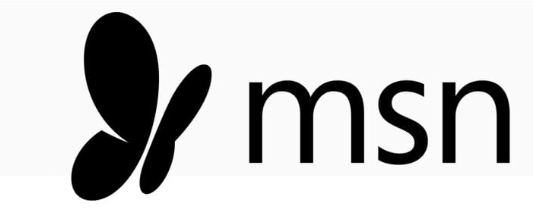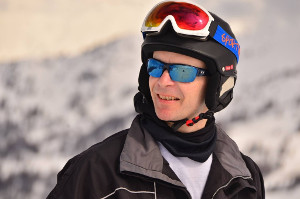 Skiing is an enjoyable and exhilarating sport that offers a sense of freedom and excitement unlike any other, which is why millions of us love to hit the slopes whenever we can. Today, there are so many pieces of equipment with cutting edge technology applied not just to your skis, but also to our gloves, pants, jackets and everything else.
Skiing is an enjoyable and exhilarating sport that offers a sense of freedom and excitement unlike any other, which is why millions of us love to hit the slopes whenever we can. Today, there are so many pieces of equipment with cutting edge technology applied not just to your skis, but also to our gloves, pants, jackets and everything else.
Yet for those who wear glasses, when it comes to skiing, it becomes an issue to figure out how to best incorporate your eyesight needs into a fun day on the slopes. We will talk about OTG ski goggles, skiing with prescription goggles, and everything in between.
The Challenge Skiing with Glasses
When skiing or snowboarding, there are two main things that can be a problem if you are wearing glasses. The first is fogging. Your dearn breath is going to fog up the goggles, or the glasses underneath, or both — especially if you are attempting to cover your nose or mouth due to cold. The change in temperatures can make it even more of an issue — going in an out of a gondola, a restroom, or a ski lodge.
The second is fitting the glasses comfortably under your ski goggles. Most standard goggles do not fit well with glasses. According to one skier we interviewed for this article, the two main pain points are pinching around the bridge of the nose, or the tendency for goggles to try to push your glasses upward toward the forehead. The wrong goggles can also bend the frame of your glasses in some cases. Happily, you can solve this with a pair of ski goggles that are designed to fit over glasses, and good goggles will help with fogging as well.
Your Options
One obvious solution is to use contacts while you are skiing, instead of glasses. Many people, however, just do not like or are unable to wear contacts at all and need their glasses to be confident when on the move. Furthermore, skiers we have interviewed suggest that the dry-eye that often accompanies contact lenses is made worse while skiing, because the mountain air if often dryer, and you are obviously skiing in cold temps which can also have a drying effect.
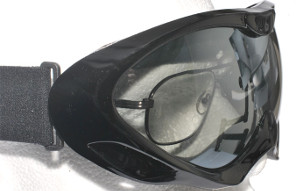 Before looking for suitable goggles, you need to make sure you have suitable glasses. That is, glasses that are secure when you do physical exercise and a lot of movement. If your glasses fall down your nose or move around when you turn around too quick, they are probably going to do the same on the slopes. That would not be very good for your comfort or your safety. Good fitting glasses should be the starting point for your ski preparations.
Before looking for suitable goggles, you need to make sure you have suitable glasses. That is, glasses that are secure when you do physical exercise and a lot of movement. If your glasses fall down your nose or move around when you turn around too quick, they are probably going to do the same on the slopes. That would not be very good for your comfort or your safety. Good fitting glasses should be the starting point for your ski preparations.
With that sorted, it is on to the goggles. There are usually three realistic options here: 1) goggles designed to fit over your glasses, 2) contact lenses, or 3) prescription lens inserts for your goggles.
Let’s start with the last one first. Prescription goggles are both expensive and difficult to find, but exist. However, we do not recommend them, because you will be faced with the issue of trying to see when you do not have the goggles on — while taking a break, having lunch, or finding your vehicle after a long day of skiing.
That is why most people choose either the goggles and glasses combination, or wearing contact lenses for the day. Wearing glasses under goggles is do-able with a little planning, and if you typically use glasses every day, may give you the most familiar and comfortable vision. The aim here is to find goggles that both fit over the glasses and yet do not allow the two lenses to touch, as that can cause a lot of annoyance and possible safety issues. So, for these goggles fit is incredibly important. Most good goggle makers have an “Over-the-Goggle” (OTG) model in their lineup that meant for just this situation. We recommend a few specific ones below, at the end of this article.
Make sure, as well, that the whole system of goggles / glasses / ski helmet works well together. Those three things need to be able to coexist without being an annoyance to you.
This is not just because of the need to stop the glasses bumping against the goggle lenses either, a good fit to your face can help minimize the problem of fogging, and obviously, your glasses fogging up is not something you want. Fogging is often mentioned as one of the big issues of skiing with glasses, but a good fitting set of goggles will help, and to improve things even further, keeping glasses spotlessly clean will almost completely eliminate the problem fogging entirely. A good clean before you head out and optional use of anti-fogging sprays and fogging worries will be a thing of the past.
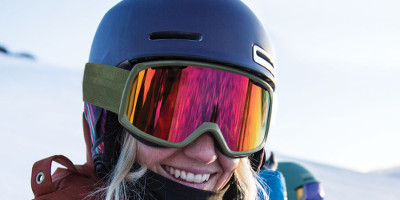 The other option, wearing contacts under goggles or sunglasses, will be the answer for many skiers and snowboarders. We asked Dr. Samuel Pierce, O.D., President of the American Optometric Association, what he recommended. His advice, if possible, use single-use contacts.
The other option, wearing contacts under goggles or sunglasses, will be the answer for many skiers and snowboarders. We asked Dr. Samuel Pierce, O.D., President of the American Optometric Association, what he recommended. His advice, if possible, use single-use contacts.
“Single use (daily disposable) contact lenses that are stable on the eye while participating in the activity are recommended. The single use allows the individual to get a “sport-specific” prescription and they get a fresh, new lens each time they are being active which may allow them the best contrast vision”, Dr. Pierce noted. He also suggested that single use lenses have other benefits for skiers. “There are single use lenses that also provide UV blocking technology so if they are to remove their goggles/sunglasses, they are still protecting their eyes from the sunlight. One of the other main benefits is comfort for the athlete. The athlete will notice the physical and aesthetic comfort of not having to manage frames and goggles or sunglasses.”
There are quite a few suitable goggles on the market, here are some ideas for adults. If are looking for kids ski goggles, we did a piece on that too.
Best Ski Goggles to Wear with Glasses
Smith Optics Goggles
Smith has a range of OTG goggles designed to be worn with glasses. The on that is our go-to is the Smith Knowledge OTG, but there are others from Smith that work well, too. The Knowledge gives you very good ventilation so your glasses won’t fog up inside the goggle, in our first-hand testing experience. With several styles, colors and lens options for each, the Smith range is a popular choice for those skiing wearing glasses. Find Here on Amazon.
Anon Relapse Goggles
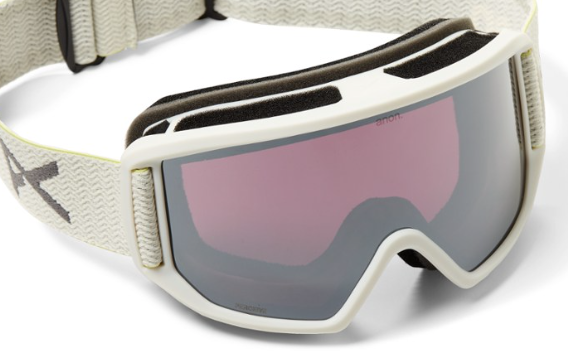
So many of our “Best Ski Goggles” lists include a version of the Anon Relapse. It is just one of the best all-around goggles on the market, and luckily for glasses-wearers, it is a legit over-the-glasses frame. The design incorporates a slightly larger frame that allows glasses to sit on your face along with the goggles. We found that you might need to do a little jostling to get your glasses past the foam liner, but once inside most (except for the super-big styles) will work. The strap is also situated so it should not affect the glasses’ temples. The Relapse usually comes with two lenses, one for flat light and one for sunnier days. Find Here on Amazon.
Giro Index OTG Goggles
Designed to fit over your glasses, the Giro Index model is available with a wide range of options including various lens types and tints, and a bunch of different colors for the polycarbonate body and strap. Cost effective, these are a great option for any beginner and offer a comfortable fit for most, yet do not sacrifice anything in construction quality to achieve their low price. We recommend having a couple lenses, one for flat-light ski days and another for those bright, sunny days. Swapping the lenses takes just a minute, and is definitely best done indoors versus on the mountain. Find Here on Amazon.
For Kids, the Anon Relapse by Burton makes a nice goggle with OTG designs. These are higher-end goggles, but provide the added benefit of also being warmer than your typical kids ski goggle. They actually come with a matching and attachable facemask that can be used on those extra-cold days. Find here on Amazon.
As you can see, with careful equipment choice and some planning, you can ski wearing glasses. So, while some will claim you need to start using contacts, you can enjoy skiing in your glasses if you wish to.

Paul Miller is the Founder of Family Skier. He is an advanced skier and has extensive experience with family travel and ski schools. An accomplished skier, he has skied in 15 states and provinces and 6 countries. In addition to FamilySkier, his writing can be found on many ski-related websites, and as curriculum for many ski clubs in North America.



